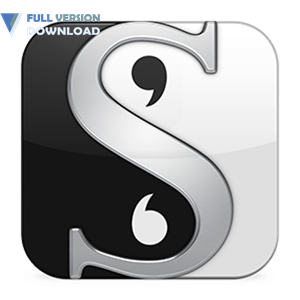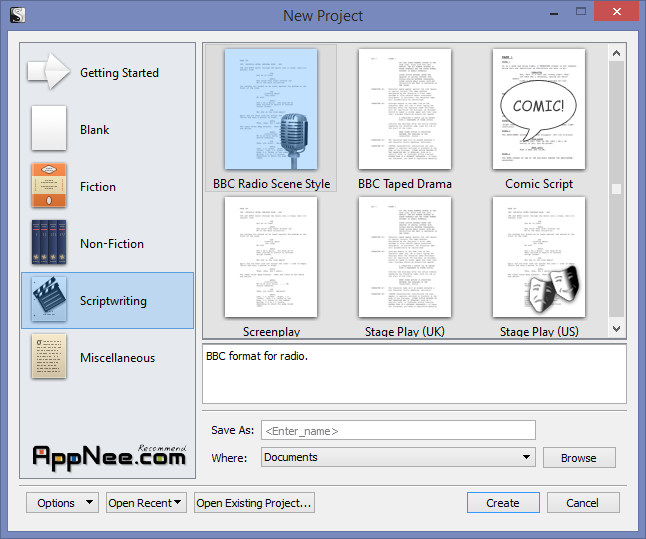

#SCRIVENER WINDOWS 1.9.6 HOW TO#
In the next blog post, I’ll investigate how to control the appearance of the chapter title. Or, if you don’t want anything to appear at the head of each chapter, it’s simple: just untick the box in the Title column!Īs I said at the start of this post: Scrivener offers so much flexibility and gives you so many options to choose between. If I decide not to do this, to remove the default Title is easy: delete it from within the display area.Įqually easy is to remove the word ‘CHAPTER’ and just leave the number, or delete the default numbering option altogether. If I decide I do want my own titles (as well as the numbering, or instead of), I simply overwrite the folder titles in my Binder. Do I dream up a title for each chapter, or not? Since my numbering might not be perfect (eg 1, 2a, 2b, 3, 4, …), I have the choice of using the automatic numbering and let Scrivener count the chapters for me. If I choose, a digit version of the chapter numbering is displayed. Lots to choose between! Using your own titles, or not?

#SCRIVENER WINDOWS 1.9.6 FULL#
Selecting Help / Placeholder reveals the full extent of tags and, if you scroll down quite a long way, you’ll find the ones used to control automatic numbering. If you change the tag, you’ll see different versions of the chapter numbering. The first pane is the Title Prefix and Suffix pane.įor the Prefix, it displays Chapter and it’s the tag (the characters within triangular brackets) which determines that the word ONE (rather than the number 1, or the Roman numeral I) is displayed. How?Ĭlicking on the Section Layout… button opens up a window with three tabs. Notice, in the formatting pane, that Scrivener presents two lines of text: CHAPTER ONE and Title.Īgain, this is the default, and you can change it if you wish. However, you are in control and you can output whatever you wish! Automatic numbering in chapter titles When you think about this, it makes a lot of sense. The default provided by Scrivener is therefore: to use the titles you choose for the chapters, but not for the scenes – and to output the text from the scenes, but not whatever titles you used for them. (If you need a reminder about what these levels are all about, check out my blog post on Formatting levels.) Notice also that, in the same row, there is no tick for ‘Text’.įor Level 2+ (my scenes), the ‘Title’ is unticked and the ‘Text’ is ticked. This is the default option, which means (unless you change it) whatever title you used for your chapters will appear at the start of each chapter. Notice that, when you select File / Compile and reveal the formatting tab, the column headed ‘Title’ shows a tick against the yellow highlighted Level 1+. I’m content with 1, 2a, 2b, 3, 4, … How to control what appears as the title when compiling So, I don’t need to spend precious time renaming all my folders whenever I make a change to the structure of my novel. No, because Scrivener gives you the option not to use your folder titles, and to use automatic numbering instead. Won’t that look daft when the book is compiled? No … In the example, I’ve broken chapter 2 into two and called them 2a and 2b. If later, I decide a chapter is too large and I need to break it into two smaller chapters, I’ll retitle only those two. While I am writing my outline, I stick this simple system: 1, 2, 3, 4, …

Here, I have called the chapters Chapter 1, Chapter 2, Chapter 3 and this next one is destined to be Chapter 4. While this dummy text is still highlighted in blue, you can type your chosen title. When you create a new folder for a new chapter, Scrivener labels it as ‘New Folder’. It’s totally up to you, and, as a bonus, Scrivener offers to automate the numbering for you. Structuring in Scrivener is all about creating folders and documents, and one of the first decisions you’ll be making is choosing whether just to number your chapters or to have titles, or both, or neither. So, let’s explore today’s topic: Chapter titles and numbering … Chapter titles and numbering My advice is to leave the defaults as they are and, only if you feel the need to change something, should you start to explore what options are open to you. Because Scrivener offers so much flexibility and gives you so many options to choose between, sometimes you may feel overwhelmed by it all.


 0 kommentar(er)
0 kommentar(er)
